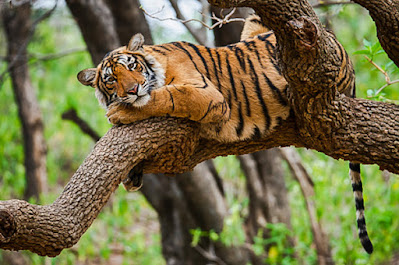How much space do tigers need?

Tigers need an enormous amount of space when they live in the wild and I believe that they still need that kind of space when in captivity even if they were born in captivity because this need is inherited. I believe that it is hardwired into their DNA. On that basis life in a zoo for a tiger is uncomfortable, sterile and without enjoyment except intermittently. And I am referring to good zoos in the West. What about the crappy zoos in Asia where we see tigers pacing to survive mentally. It is horrible to see. I shake my head when I think of it because I don't know how people can put tigers through that kind of mental torture. Only ignorant people can do it. Tiger in captivity. Photo: Pixabay I do not believe that it makes any difference whether a tiger is born in captivity, in a zoo, or whether they are born in the wild. They need a certain amount of space in order to express their natural behaviour. It is an enormous amount of space. It depends upon where the tiger lives in the w...











